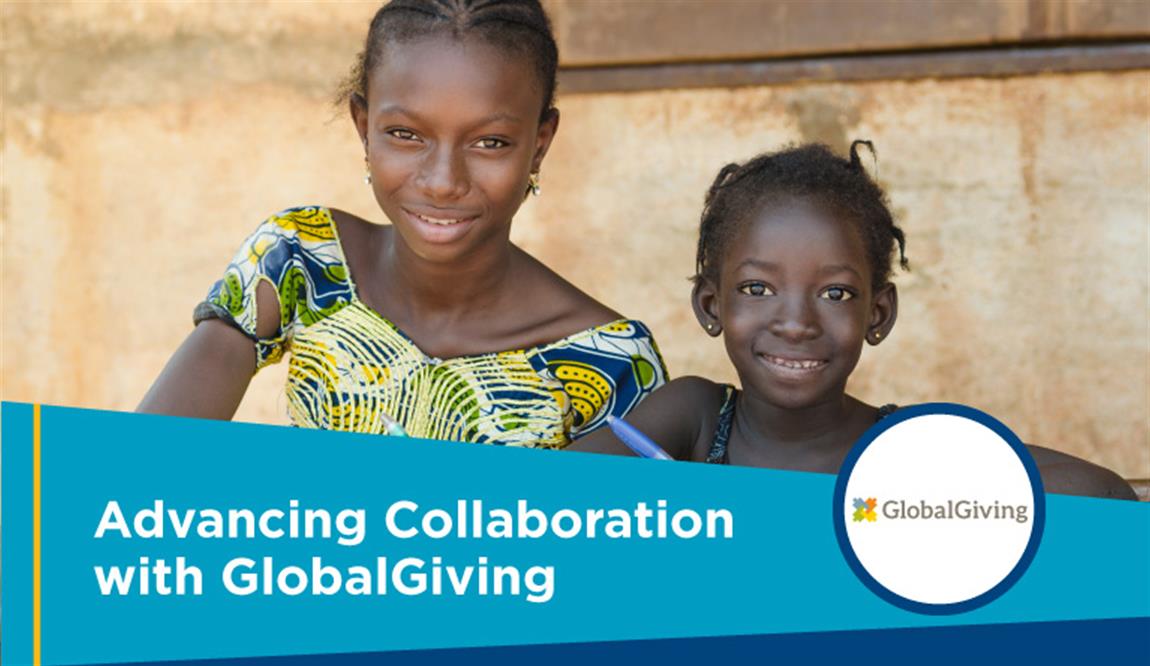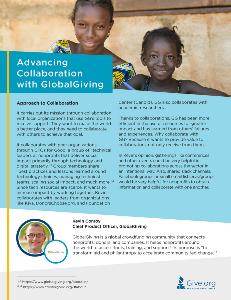
GlobalGiving is a global crowdfunding community that connects nonprofits, donors, and companies. It helps nonprofits around the world to access tools, training, and support.3 Its purpose is “to transform aid and philanthropy to accelerate community-led change.”4

Featured Guest
Kevin Conroy
Chief Product Officer,
GlobalGiving
Approach to Collaboration
It carries out its mission through collaboration with local organizations that use GlobalGiving’s tools to receive support. They want to make the world a better place, and they need to collaborate with others to achieve that goal.
It collaborates with peer organizations through CTOs for Good, a group of “technical leaders at nonprofits that deliver social impact primarily through technology and digital strategy.”1 Group members share “best practices and lessons learned around technology choices, managing technical teams, scaling social impact, and much more.”2 Since tech resources are scarce, it wants to increase impact by working together. Kevin collaborates with leaders from organizations like Kiva, DonorsChoose.org, and Foundation Center (Candid). GlobalGiving also collaborates with academic researchers.
Thanks to collaborations, GG has been more efficient in the use of resources for greater impact and has learned from others’ failures and experiences. Why collaborate with GG? Because it wants to provide value to collaborators, not only receive from them.
In Kevin’s opinion, gatherings like conferences and other events could be very helpful in promoting collaborations across the sector in an intentional way. Also, shared slack channels, Facebook groups or small email listservs/groups would be very helpful for nonprofits to obtain information and collaborate with one another.
Application of the 9 Considerations for Collaboration
Build Trust
Collaboration is about building trust with people. Building trust between people and organizations engenders the confidence needed to carry out collaborative projects. It is also important for each partner to be transparent about their agenda.
Have a Vision
CTOs for Good began with the short-term vision of sharing strategies for success. But, through their increased involvement with collaborations, they evolved to a long-term vision. GlobalGiving has gotten more involved in collaborations because that is the way nonprofits should work; nonprofits should leverage the resources available to achieve our mission along with other like-minded organizations, rather than pursue selfish gains that only benefit a single organization or stakeholder.
Seek to Assure the Success of Collaborators
In Kevin’s opinion, this is the secret to long-term, effective collaborations. An example of this are the collaborations they have with academic researchers, like behavioral economists, that use GlobalGiving’s platform to conduct tests on donor behavior. The researchers demonstrate their support for GlobalGiving’s objectives and try to help GlobalGiving increase donations while also furthering GlobalGiving’s mission.
Simultaneously, GlobalGiving cares about the researchers’ objectives to author papers and academic material. Considering each party’s objectives, they carry out projects that are mutually beneficial. In contrast, there are other academic researchers that have their own agenda and are not interested in GlobalGiving’s objectives. Collaborations with these researchers are not attractive to GlobalGiving. It is important to find actors to collaborate with where there is common ground. Otherwise, collaborations are not likely to succeed.
Take Stock
This is part of GlobalGiving’s business model. On the one hand, they have different products and services to offer to other organizations, such as a global crowdfunding platform to support nonprofits in 170 countries around the world. GlobalGiving vets each nonprofit and offers training and support to every nonprofit, big and small, on how to take their crowdfunding to the next level through the GlobalGiving Accelerator. On the other hand, they also try to find products and services that other organizations already have that can be useful to GlobalGiving (e.g., GlobalGiving is subscribed to GuideStar/Candid).
Start Small
This is very important for GlobalGiving in its collaborations and projects. CTOs for Good is an example of this. It started with a group of people getting together to share knowledge and experience, which does not require significant outlays of time, but has been very effective.
CTOs for Good was started by George Weiner, who was then CTO of DoSomething.org. An initial grant from the Knight Foundation provided funding for eight nonprofits to see if such a collaboration would work. The two-day conference showed promise, and the group stayed in touch via email. The annual conference continues to this day, supported by the New York CTOs Club. CTOs for Good’s two-day annual conference is the group’s most important activity. Despite its shortness, Kevin finds the meeting to be incredibly enriching.
Fail Fast, and Build Rigorous Feedback Loops
Feedback loops are very important for building trust. For example, GlobalGiving, together with other organizations, obtained a joint grant to conduct an email test among its subscriber base. But, it didn’t work, they did not get publishable results, and the coordination efforts turned out to be much harder than expected. So, GlobalGiving decided not to continue with this collaboration instead of carrying on with something that was not working.
Take a Portfolio Approach
GlobalGiving is part of different groups for collaboration, and they are open to different collaborations. For example, GlobalGiving participates in the CMO Braintrust (coordinated by Bridgespan), and also with a working group called “The Superfriends” with Kiva, DonorsChoose.org, charity: water, Canadian Red Cross, DoSomething.org, and Watsi. GlobalGiving is open to collaborating with a range of entities who can both learn from its experience as well as provide insight and advice to further GlobalGiving’s mission. If you’ve read Adam Grant’s wonderful book “Give and Take,” GlobalGiving, unsurprisingly, is full of “Givers” ready to collaborate with other “Givers.”
Consider Non-traditional Partners
They collaborate with peers, academics, consulting groups, and others. For-profit organizations are seen more as customers than collaborators for GlobalGiving.
Keep Your Donors Apprised of Your Collaborations
Collaborations have become a talking point with donors. Donors are happy to see efficient use of resources, which encourages them to give more funding.
Future Collaborations
For future collaborations, they would look for peers in the sector. They also need help with machine learning. They are looking for tech professionals to provide pro-bono help. GlobalGiving can provide the opportunity to be part of something that can make them feel good and has a big impact.
1, 2
https://www.ctosforgood.org/#about
3, 4
https://www.globalgiving.org/aboutus/


